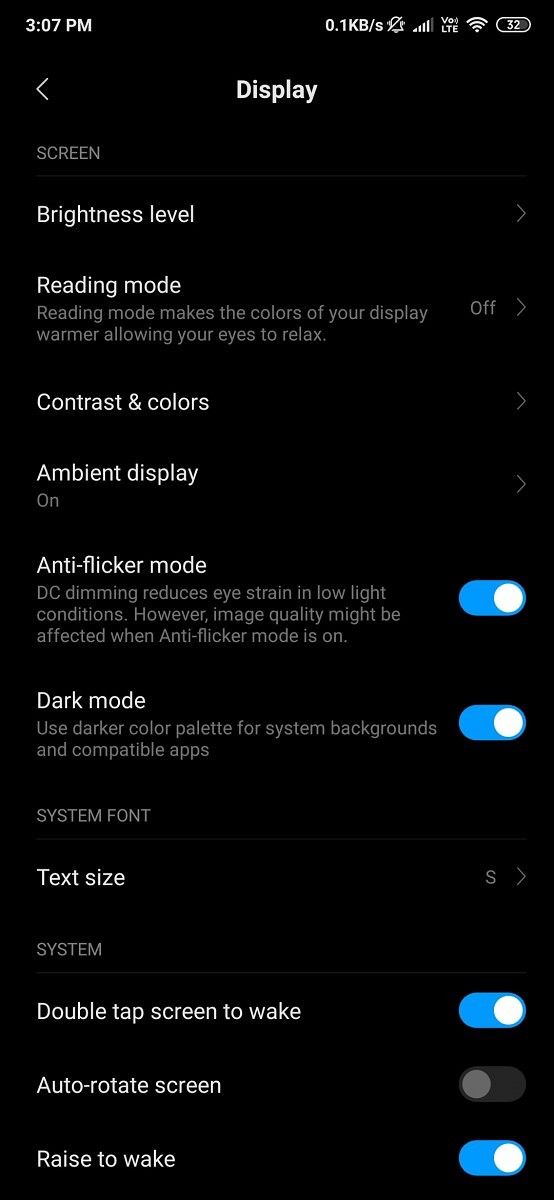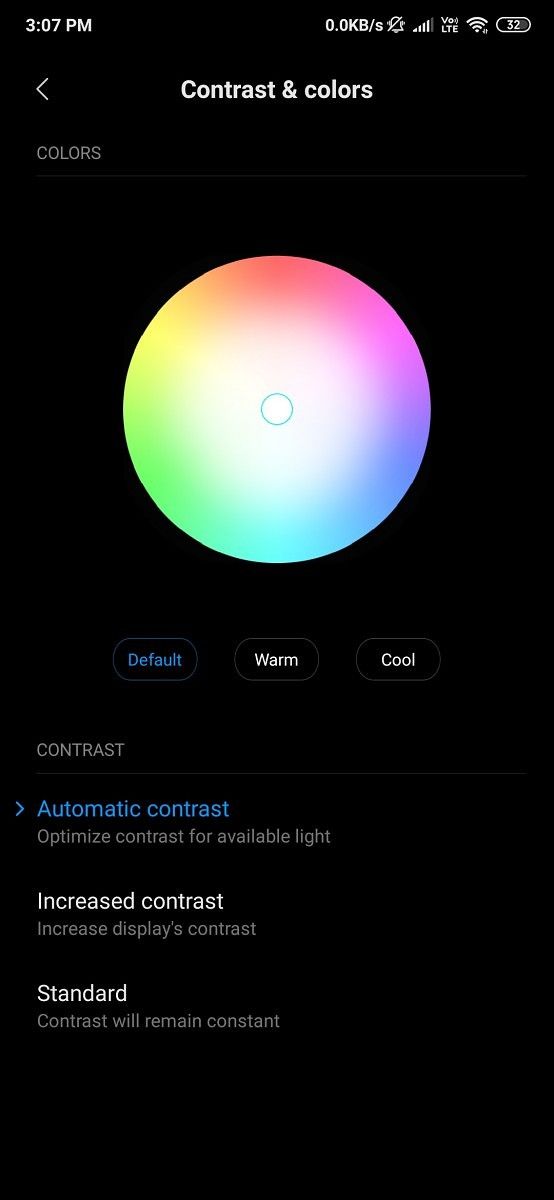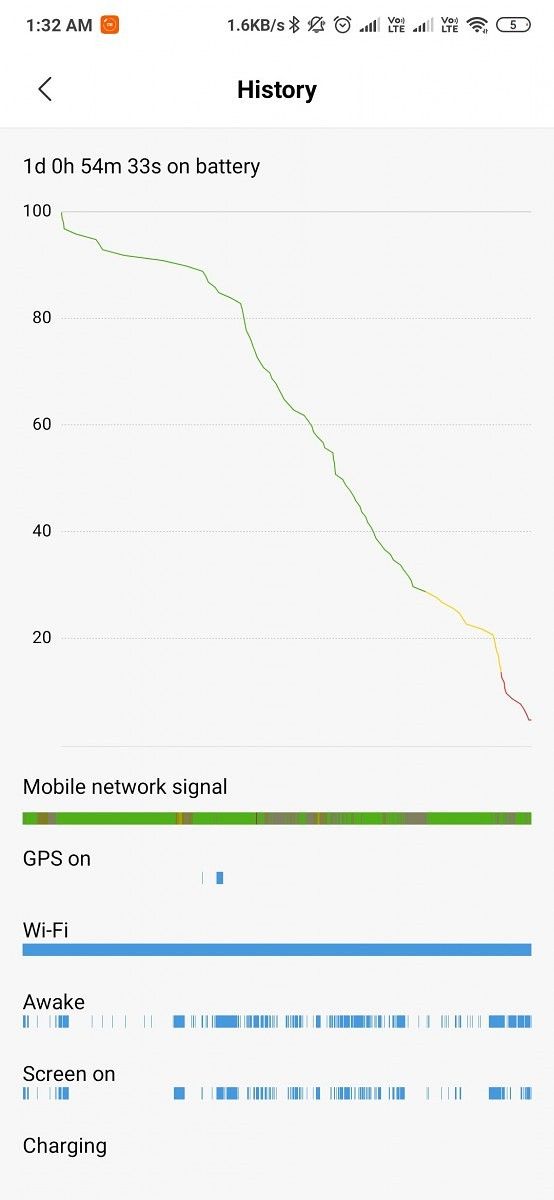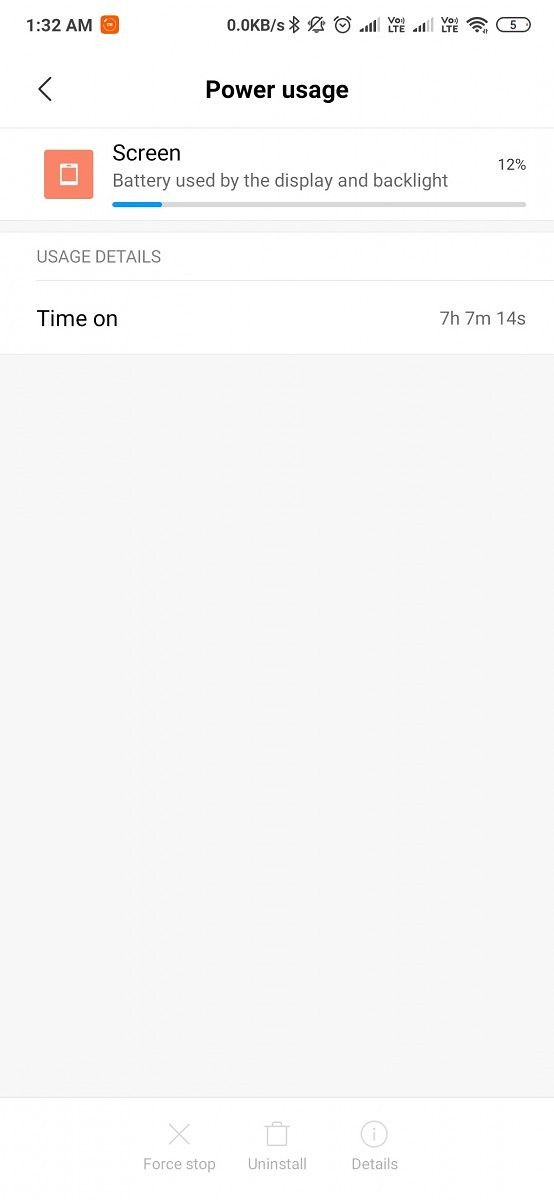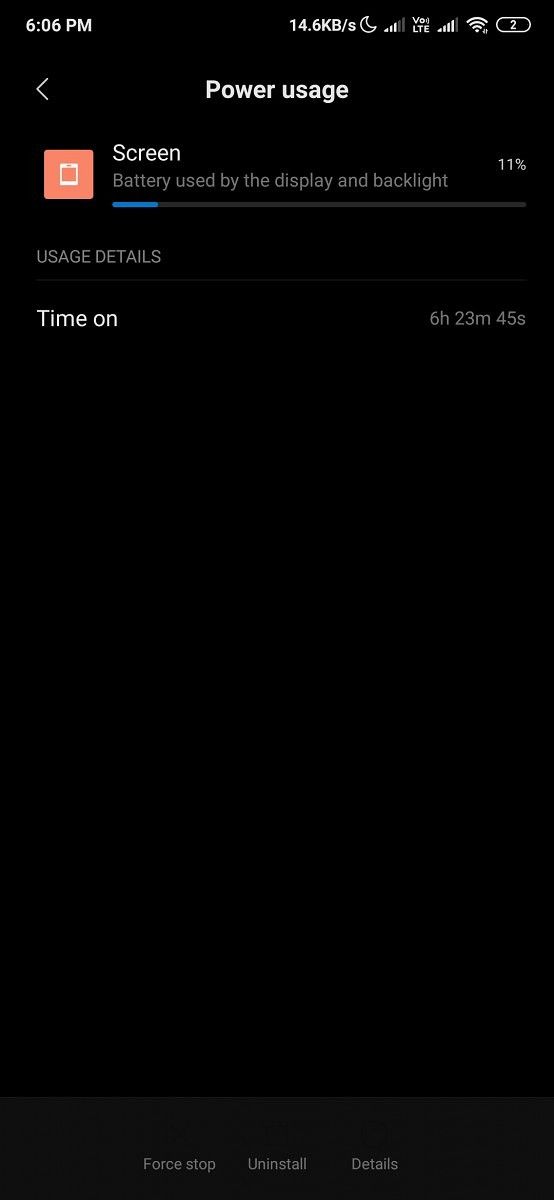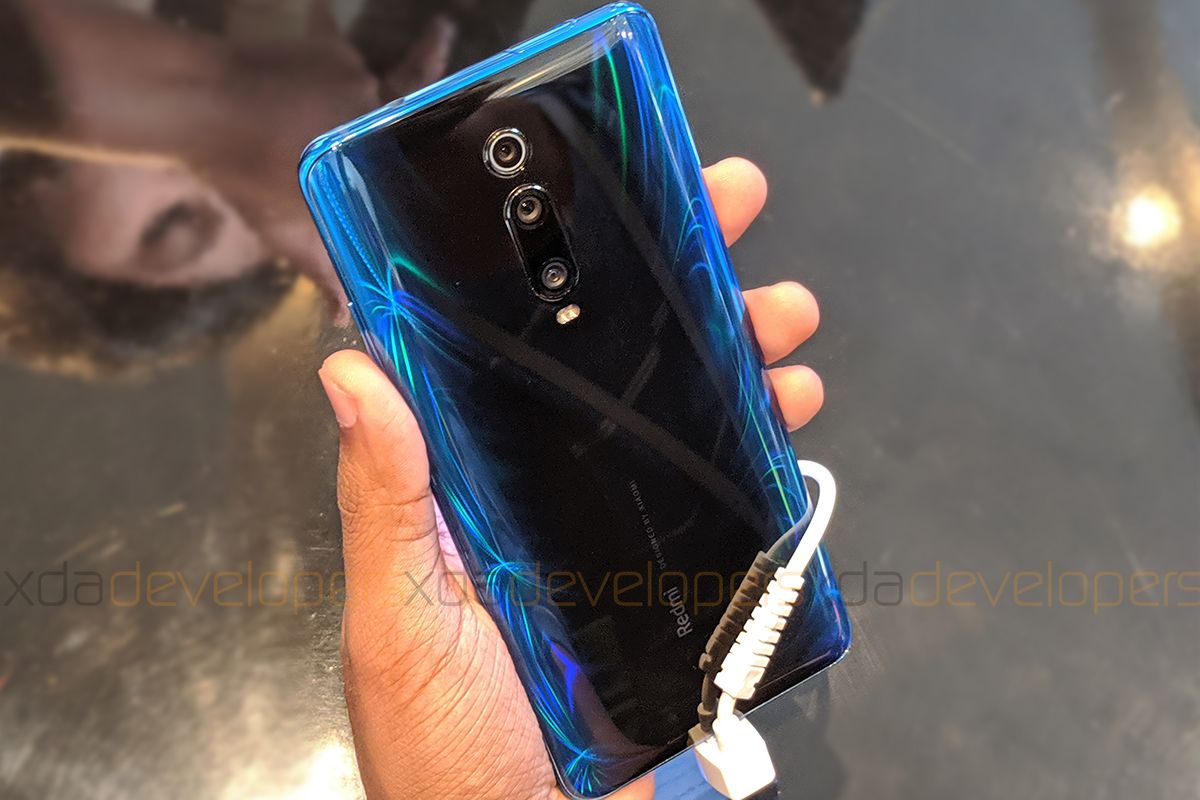Redmi K20 Pro Review: ‘Flagship Killer’ Reimagined
Redmi K20 Pro Review: ‘Flagship Killer’ Reimagined
About five years ago, the word “affordable” would not be sung in the same lyric as the words “flagship smartphone.” But, in the contemporary smartphone market, the two adjectives are often married under the umbrella term “affordable flagship.” The phrase, quite explicitly, describes smartphones that look and feel like a flagship but cost way less than a classic flagship. The concept has become a reality thanks to companies like OnePlus and Xiaomi. With the crossover of affordability and premium features, these inexpensive flagships – just like recently launched Redmi K20 Pro – have massive mass appeal and can drive more users than actual premium devices.
Redmi has taken a leap into the premium segment, transcending its pedigree of affordable and budget smartphones. Its parent company Xiaomi has moved the earth with its aggressive marketing to fortify claims of the Redmi K20 Pro being an invincible affordable premium flagship. While Xiaomi has launched several flagships in the years gone by, its journey to radicalize premium smartphones began last year with its first “Flagship Killer”, the POCO F1. The Redmi K20 Pro carries forward this legacy with a suffix 2.0 following the title.
While its eligibility to carry the Xiaomi’s Flagship Killer bloodline forward after the POCO F1 remains arguable, Xiaomi has pitted its wits against OnePlus in the rapidly surging premium segment. Xiaomi exhibits confidence that the Redmi K20 Pro will wolf down its competitor in the segment; thus, deciding to call the smartphone an “Alpha Flagship.” The Qualcomm Snapdragon 855 mobile platform is one of the primary reasons the Redmi K20 Pro makes the cut as a powerful smartphone. But unlike the POCO F1, which was a medley of hardcore raw specifications tethered to an unexciting polycarbonate design, the Redmi K20 Pro trumps that premise with a premium and stimulating glass design. This is complemented by an AMOLED display without a notch hindering the symmetry of your device, a selfie camera shuttled by a pop-up mechanism, a camera triad on the back with dedicated sensors for optical zooming and ultra-wide photography aside from the primary 48MP shooter.
With this new and more premium product, Xiaomi enters the territory demarcated by the ₹30,000 price point in India. The Redmi K20 Pro is charming and attractive, but if you demand more glitz, there’s a limited edition gold-plated and diamond-studded variant which is nearly 15 times as expensive as the regular K20 Pro.
I’ve been using the Redmi K20 Pro as my primary device for nearly a month now and have come to form opinions about the aspects that can influence your decision of buying the smartphone.
Note: Xiaomi India loaned us an 8GB/256GB variant of the Redmi K20 Pro and a 27W Turbo Charger for the review.
Redmi K20 Pro Specifications
| Specifications | Redmi K20 Pro |
|---|---|
| Dimensions & Weight |
|
| Display |
|
| SoC | Qualcomm Snapdragon 855:
|
| RAM | 6GB/8GB |
| Storage | 128GB/256GB |
| Battery | 4000mAh |
| Fingerprint Sensor | Optical In-display |
| Rear Camera |
|
| Front Camera |
|
| Android Version | MIUI 10 based on Android 9 Pie |
| Colors | Flame Red, Glacier Blue, Carbon Fiber Black |
Design
Since the first tease from Xiaomi, the design of the Redmi K20 and the K20 Pro has been very intriguing. To up its premium game, the smartphone gets a glass sandwich design along with Gorilla Glass 5 protection on both sides. Redmi aces the hypnotizing 3D gradient trend on both the Flame Red and the Glacier Blue variants, and this makes the smartphone very attractive and distinctive. Even after gawking at the patterns for literally several minutes in a row, I feel myself being so much in awe of the mesmerizing reflective surface.The underlying pattern shifts and changes with the incident light
In my first impressions of the Redmi K20 Pro, I talked about the fundamental layout of various elements in the design, so this section will be more critical and revolve around aspects worth admiring as well as being cautious about.First of all, I cherish how the Redmi K20 Pro nestles in the palm, especially considering that I don’t have very big hands. The curvature of the glass back adds to the grip and makes the phone feel slightly lighter, even though it weighs a little over 190 grams. Redmi has added a thin and flexible plastic case within the box for those who prefer covering up fragile phones. Coming to the aspect of fragility, the glass sandwich design may make a few users nervous, even though the K20 Pro doesn’t feel very slippery. For the durability of the glass design, there is Gorilla Glass 5 on both sides and it is likely to put off users expecting the Redmi K20 Pro to feature the latest version of the protective glass. By mistakenly throwing the smartphone in the same pocket as my keys, I have been able to create thick grooves on both the front or the back. So, if you’re already convinced about buying the Redmi K20 Pro, make arrangements for a screen protector along with either a case or a skin for the smartphone.

The display on the Redmi K20 Pro, unlike its back, isn’t as curved and this is something I prize. Based on the comments we received in our first impressions, many individuals seemingly equate curved screens with a premium smartphone and this disposition, in my understanding, is a side-effect of Samsung heaving its premium phone portfolio with curved screens. With the OnePlus 7 Pro, the original flagship killer brand – OnePlus – used this trick to make the smartphone appear more attractive. Personally, however, I prefer the flat display since that not only makes it easier to type on the keys in the outward rows but also makes it easy to use MIUI gestures, especially the back gesture which involves swiping inwards from either of the edges.

The display measures 6.39-inches diagonally and this is the same as the Mi MIX 3, which Max found to be one of Xiaomi’s most premium devices. The Redmi K20 Pro is embarked on a journey to acquire a similar reputation and the display does help it qualify as a premium device with its thin bezels around all the edges resulting in an attractive appearance.
With the Redmi K20 Pro, Xiaomi exhibits its ability to craft beautiful smartphones.Despite joining the same league as premium smartphones, the Redmi K20 Pro retains a headphone jack and this considerate step presents a compelling argument to users who are in a long-term relationship with a particular pair of headphones. In an era when dongles are common, the presence of a 3.5mm jack remains debatable. It is commendable that Redmi has managed to cram a headphone jack in the conveniently slim profile of the Redmi K20 Pro. However, that does come at the expense of an IR blaster, which sadly does not find a place on this smartphone. Additionally, I’ve come to grow an affinity for the lights on both sides of the pop-up selfie camera. This is especially useful when the selfie camera rises for incoming video calls or facial authentication.
Throughout my usage, however, I have come to witness an issue with the selfie camera (thanks to Twitter user F.T.L.O.G. for first bringing this to my notice). Light bounces off the shiny metallic area in front of the pop-up camera cavity and this causes flaring when there’s a strong source of light. In most cases, this flaring is trivial unless the smartphone is held at a certain angle to the light source but it does leave you with the constant anxiety of avoiding it. This isn’t unique to the Redmi K20 Pro and can be witnessed on devices including the Realme X as well and a case that veils the reflective metal part should be able to remedy the problem. This video should help you understand the problem.
The overall design of the Redmi K20 Pro is quite compelling, especially due to the not-so-subtle pattern on the back that can be likened to anything from blazing flames of fire to constantly shifting bands of clouds over Jupiter, to fractal patterns. The design is thoroughly fascinating and competent enough to leave you awestruck. The reflective metal surface enclosing the pop-up camera remains to be a matter of concern. You might want to use a clear case (my personal favorite is the Ringke Fusion-X for ₹1,199) that neither completely takes away from the marvelous design on the back nor causes flaring on the front camera. The K20 Pro’s handsome looks together with an assuring build let it win your confidence as a tenable smartphone while the Gorilla Glass 5 gives some conviction about the durability.
Display
Xiaomi’s stride to build a meritorious flagship or at least a flagship killer device commences forth with its choice of display on the Redmi K20 Pro. The smartphone uses an AMOLED display made by Samsung. The display gets a peak brightness of 600 nits and supports ~104% of the NTSC color gamut. Notably, this is the same AMOLED panel as the flagship Xiaomi announced earlier this year – the Mi 9 – but the lack of a notch up on the top allows the Redmi flagship to have a slightly higher screen-to-body ratio. Whether or not Xiaomi contrives the Redmi K20 Pro as a successor to the POCO F1 is something we will get to sense later on in the year, but the AMOLED display does add a new component to Xiaomi’s flagship killer DNA. The display comes with rounded corners and unlike the POCO F1, Xiaomi has taken heed of symmetry this time. The display is hemmed in by thin bezels along all four edges, including the slight chin, which is modestly broader than the other three sides. Redmi uses a fancy moniker – “Horizon” display for this screen on the back of the easily avoidable bezels.
In accordance with AMOLED panels, the Redmi K20 Pro’s display has rich contrast and vivid colors. A yellow overtone masks the display but this can be rectified using either the automatic contrast or high contrast options in MIUI’s display settings. Just like other devices running this Android skin, you can alter the color tones to suit yourself. This is not a Super AMOLED display and may feel limited in terms of brightness in comparison with certain other devices. The difference, however, will irk you only when the Redmi K20 Pro is placed side-by-side with another smartphone that features a Super AMOLED display.
With the ongoing concerns about the harmful effects that AMOLED displays might have due to usage in low ambiance, Redmi has added a DC Dimming mode to the K20 Pro. To the naked eyes, DC Dimming increases the brightness a tad bit but it prevents pulsating light beams at low brightness levels from causing any damage to your eyes. Curiously, at low brightness levels, the brightness of the display does not appear to be uniform throughout the panel and there are visible columns of light and dark gray colors while using apps with a Dark theme/mode. Dylan confirms that the issue is venial as it plagues almost every mid-range OLED panels.

Bands caused due to uneven illumination under the panel. The issue is common on mid-range AMOLED displays and is not unique to the Redmi K20 Pro
Starting off, the AMOLED panel does not show any evidence of burn-in, which sounds like a good opening bid. It supports multi-touch for up to 10 points simultaneously and this, again, is something standard yet delightful. The Redmi K20 Pro passes with flying colors in the banding, contrast, and saturation tests, and only appears to be strained at the extreme ends of the color gamut i.e. at too dark or too light colors in the banding test. Additionally, the display is only slightly short of perfect in terms of the contrast test. Quite frankly, though, you’re not likely to notice these shortcomings unless you place this device next to a smartphone with a much superior display.
Notably, when two or more fingers are resting on the screen, moving the third finger in a path parallel to an imaginary line causes the other two points to move slightly and the mock-up video below should illustrate what I’m trying to say. The issue is known to affect other (non-Super) AMOLED displays so Xiaomi is not really to be blamed in this case. Having said that, I haven’t faced any issues due to this while gaming rigorously on the Redmi K20 Pro, especially in FPS games like PUBG Mobile and Shadowgun Legends.
However, the ghost touch issue linked with the 3-finger screenshot gesture, which peeved many POCO F1 users, persists on this device too. Surely, disabling the gesture option is an ideal way to deal with this but I would expect Xiaomi to fix the issue after almost a year of agitation by the users. Plus, it basically renders an effective gesture in MIUI useless. There’s no promise on a software fix for this bug yet but I hope Xiaomi continues to embrace feedback from the users.
Overall, while a Super AMOLED display will be highly appreciated, the choice of an AMOLED panel is premised on the economics of the smartphone. Despite a lower brightness than what a Super AMOLED would offer, the readability of the Redmi K20 Pro’s display remains unbeaten even under strong light sources, both indoors and outdoors, unless it is directly reflecting the sun and this makes it easy to overlook these imperfections.
Lastly, devout developers in XDA’s forums have created a way to overclock the refresh rate of the Redmi K20 Pro’s display to 75Hz, which is something worth trying out if you want better performance with the display. Do keep in mind the risks associated with such a move, though.
Performance
The Redmi K20 Pro fares well on the expectations from a premium smartphone in terms of the overall build and the display as well as exhibits the right set of apparatus for a flagship-grade performance. A Qualcomm Snapdragon 855 mobile platform along with up to 8GB of RAM is the main driving force for the K20 Pro’s performance motive. The octa-core of the mobile platform consists of eight 7nm Kyro 485 cores clubbed in three different clusters. These include a single high-performance core at 2.84GHz, three cores clocked at 2.42GHz, and four high-efficiency cores with a frequency of 1.8GHz. This setup is the same as what we see on the Xiaomi’s earlier flagship from this year – the Mi 9, which was hailed by Adam as a “masterclass” performer in his review. However, nearly six months have passed since the Mi 9’s launch and this has allowed many other companies to pit their flagship rivals in the segment.Unquestionably, the muscle power that the Redmi K20 Pro displays is flagship-grade. Xiaomi says that the underlying AI pre-loading optimizations in MIUI learn about users’ preferences. Using machine learning, this algorithm can predict which app you’re likely to open and pre-load it in advance microseconds before you actually do. No doubt, the Redmi K20 Pro never makes you yearn for more power, there’s always ample at supply. The review unit we have for review has 8GB of RAM and 256GB, that’s the most that Xiaomi offers on this smartphone. Constantly using the device for a month now, I have not come across a single incident of stutter or lag and the same can be expected from the variant with 6GB RAM.
No doubt, the Redmi K20 Pro never makes you yearn for more power, there’s always ample at supply.Even though the Redmi K20 Pro’s quantifiable performance is not likely to be much different from the Mi 9, I ran some of the usual synthetic benchmarks to put it into perspective.
AnTuTu
Starting first with AnTuTu, the K20 Pro breaches the 350k mark and comes near – although short of – other smartphones rocking the same chipset. Despite the same configuration as the Mi 9, our K20 Pro review unit lags slightly behind by a noticeable margin by almost 20,000 points. The chart below compares the AnTuTu score of the K20 Pro with that of the Xiaomi Mi 9, the Nubia Red Magic 3, the OnePlus 7 Pro.
GeekBench
Moving to GeekBench 4, one of the most straightforward and diversely used synthetic benchmark. It is always exciting to see any device leap past a certain threshold and in this case, the Redmi K20 Pro’s multi-core scores go beyond 10,000, which is nothing short of an accomplishment for a smartphone that just about leans into the premium segment. In this test, the Redmi K20 Pro appears to edge out the Nubia Red Magic 3 and comes close to the OnePlus 7, but remains short of the Mi 9.There’s a noticeable variation in successive Geekbench scores of the K20 Pro and these tend to decrease as the smartphone heats up, which means there may be some thermal throttling in this case. Unlike the POCO F1, which had a liquid-based heat sink, the K20 Pro comes with multiple layers of graphite around the motherboard to dissipate the heat. For a fair comparison, I’m using the average of three scores. Here’s a chart for comparison:

PCMark Work 2.0
In the process of getting the performance of Redmi “Alpha” taped, the next step was to compare scores based on PCMark’s Work 2.0 performance benchmarks. PCMark Work 2.o measures a smartphone’s capacity to run routine tasks such as web browsing, photo, and video editing, as well as opening, viewing, editing, and saving documents by employing APIs in Android. The Redmi K20 Pro takes a barefaced beating from the OnePlus 7 in these tasks and this is likely to be due to the faster storage technology on the latter. Here’s how the Redmi K20 Pro fares in comparison with the OnePlus 7 in terms of PCMark Work 2.0 scores.
3D Mark
The Snapdragon 855 mobile platform on the K20 Pro comes with an Adreno 640 GPU, which is likely to offer a 20% graphics performance boost over the Adreno 630 integrated within last year’s flagship chipset – the Snapdragon 845. While running 3D Mark, which is a graphics-intensive benchmark, I’ve seen some puzzling trends in the performance of the smartphone. Not only does it fare below most other smartphones with Snapdragon 855, but it also falls short of other devices with Snapdragon 845, including the OnePlus 6T. This is disconcerting since Xiaomi spent a good time at the launch event in India tossing buzzwords such as “Vulkan,” which is a cross-platform API that allows graphics-heavy applications – especially games – instead of the graphics driver to control the GPU for an optimal allocation of GPU threads and memory per app.Oddly enough, the K20 Pro cannot hold up to other devices, in tests using both – Vulkan and OpenGL – APIs. This may be because the unit I have is pre-production but there’s no clear explanation for this falter. Here are the comparison scores for you to check out:

I ran GFXBench, which is another benchmark for demanding graphics-related tasks, and I could observe a similar trend with lower scores than the competitors in each of the tests. In each of the tests, the K20 Pro clocks the least frame rate compared to the OnePlus 7 and the Red Magic 3. Take a look at the comparison of scores between the Redmi K20 Pro, OnePlus 7, and the Nubia Red Magic 3:
Storage Benchmark
The Redmi K20 Pro comes with a UFS 2.1 dual-lane NAND storage. While UFS 2.1 is seen as the standard on a host of devices, the OnePlus 7 leads with the latest UFS 3.0 storage, which makes it significantly faster in day-to-day usage. We can cut the Redmi K20 Pro some slack since it has much more on the ball than the OnePlus 7. Interestingly, Idrees found no substantial real-life difference despite the faster USF 3.0 storage during the OnePlus 7 review. Further, another intriguing trend in comparison with the UFS 3.0 devices (we only have the OnePlus 7 and the 7 Pro for now) is that while the sequential read and write as well as the random read speeds are higher on these devices compared to the UFS 2.1 devices, the random write speeds are much lower on the OnePlus devices.The transfer rates of the inbuilt storage calculated with Androbench are as follows:
Gaming
When it comes to gaming, the Redmi K20 Pro’s performance is as good as it can get. Just like most casual smartphone gamers, I dig FPS games and the K20 Pro handles popular titles like PUBG Mobile, Fortnite, and ShadowGun Legends very well. Given the specifications, of course, there shouldn’t be any doubt about the gaming performance. The lower GPU performance we saw in the benchmarks above may be something to ponder over for a few seconds, but in real life, I have not experienced any lag or frame drop while playing every game I tested on the device at the highest settings. For instance, PUBG Mobile runs at Ultra frame rate and HDR (following the latest update) with anti-aliasing on; although Fortnite doesn’t support 60fps gameplay which the Mi 9 does, it runs without any hindrance.
Some of the other games that I ran on the Redmi K20 Pro and also enjoyed include Real Racing 3, F1 Mobile Racing, Hitman Sniper, Dragon Hills 2, Oddman, Monument Valley, etc. The smartphone also gets Xiaomi’s Game Boost option which lets you avoid interruptions, boost gaming performance, and graphics during intensive sessions.
When it comes to gaming, the Redmi K20 Pro’s performance is as good as it can get.Unfortunately, I was not able to grant access to GameBench – both free and Pro versions – to be able to analyze what the smartphone can yield in terms of gaming more accurately. After a couple of hours of troubleshooting with the patient engineers from Gamebench, I was informed that the build of MIUI running on the unit I have lacks certain libraries required for the gaming benchmark tool to run. (The future course of action involves flashing the latest build of MIUI on the K20 Pro unit so that this article can be updated in the future.) While the reinstallation of the system should help clear the air about the smartphone’s ability to take up graphics-related challenges, I’m quite confident about its overall gaming performance based on practical experience.
Audio
While the Redmi K20 Pro undeniably puts up a remarkable gig in terms of its performance and multimedia experience, thanks to the impressive hardware – including its display, you also get a rich experience in terms of the smartphone’s audio capability. While the K20 Pro ditches the vicarious earpiece speaker we saw on the POCO F1, the primary speaker is very loud and clear. For the times I was confined within a set of walls, I would prefer lowering down the sound. Music playback through the single speaker is good too but is more aggressive towards the higher frequencies (as with loudspeakers usually). While Redmi does not include a headset within the box, you can customize the quality of the sound using the variety of headphone effects from the Setting in MIUI.Biometrics
There are two ways to unlock the Redmi K20 Pro – the in-display fingerprint scanner and the face unlocking features. To unlock the smartphone using face unlock, the pop-up camera must be retracted and this takes almost a second of motion, and for this reason, I prefer using the fingerprint scanner. This is an optical scanner as we’ve seen on the majority of smartphones sporting the under-display fingerprint technology (Samsung’s latest flagships have ultrasonic fingerprint scanners). Both the fingerprint scanner and facial authentication are very reliable and the former works accurately 95% of the time. There may be some jitters but that is primarily due to the thumb/finger not being aligned with the sensor.Camera
In terms of the specifications and the utility of the cameras, the Redmi K20 Pro houses a setup similar (although not exactly identical) to the Xiaomi Mi 9. The setup comprises of a 48MP Sony IMX586 sensor for the primary camera and the lens it uses has an aperture of f/1.75. This is clubbed with an 8MP telephoto sensor that uses an f/2.4 aperture lens and supports 2X zooming. Besides these, there’s a 13MP wide-angle sensor married to an f/2.4 lens as part of the rear camera setup and it captures a 125º wide field of view. The rear camera also comes with autofocus laser, the two visible dots located between the primary and the wide-angle sensors. Meanwhile, the pop-up camera incorporates a 20MP selfie shooter with an f/2.2 aperture lens.During the time I’ve spent with the K20 Pro, I have enjoyed the performance of the camera.During my first impressions Redmi K20 Pro, I was fairly delighted by the performance of this camera setup and this sentiment has prevailed for nearly a month that I’ve spent with the smartphone. The Camera UI is similar to what we’ve come to see on other Xiaomi and Redmi smartphones running MIUI. During the time I’ve spent with the K20 Pro, I have enjoyed the performance of the camera. The camera, for one, feels versatile and secondly, is very dependable. There’s barely any shutter lag and you can cycle seamlessly through the different modes. Besides photography at up to 48MP, the smartphone is capable of 4K video recording at 60fps, which is clearly something videography enthusiasts will enjoy. The Camera also supports Xiaomi’s AI scene detection and optimization options but the images taken in my review are without the AI option.

Furthermore, the Redmi K20 is also equipped with the same camera setup, so you can feel free to use this as a camera review of either of the devices. For the sake of easy analysis, I’ve segmented the K20 Pro’s camera performance in the following parts:
Primary camera 12MP
Kicking it off with the Photo mode on the Redmi K20 Pro, the 4-in-1 Pixel binning supported by the 48MP Sony sensor lets users take images that are effectively 12MP in resolution. Since these are formed by combining four pixels into one, the images turn out to be well-lit and sharp. In terms of colors, the images taken by the Redmi K20 Pro are very vibrant but some users may find them more saturated – or these might at least look very saturated on the smartphone AMOLED display. This may require some editing but overall, the images are likely to justify the requirements of the majority of users. The only intriguing bit about the camera is that the images usually have ISO values of more than 100, which may result in unexpected noise.
12MP vs 48MP
Unlike the Redmi Note 7 Pro, the K20 Pro gets a dedicated 48MP mode for high-resolution images. The ISP on the Snapdragon 855 SoC allows for a much shorter processing lag on the Redmi K20 Pro than the Note 7 Pro, in spite of the same sensor on both the devices. As expected, the 48MP shots on the K20 Pro appear to have more light and saturation than the ones captured in the standard model. While higher resolution images are traditionally thought to have more details than 12MP ones, it depends on the amount of light. If the 48MP images get decent ambiance, the output shots actually have more details than the 12MP ones but in the absence of adequate light, we come to see more noise and fewer details.Further, at night or in low-light, the 48MP images have higher ISO value and, thus, greater optical as well as color noise in the images. Take a look at the samples below.
![[12MP vs 48MP] Redmi K20 Pro](https://live.staticflickr.com/65535/48541846197_1634b43b42_h.jpg)
Telephoto
Taking advantage of the second camera on the Redmi K20 Pro, you can take images at 2X optical zoom. The telephoto lens on the K20 Pro supports auto-focus and outputs images at 8MP resolution. While the telephoto camera captures images with ample details, the colors are visibly less vibrant. This may give a false impression the images are brighter but that’s not really the case.![[2x Telephoto] Redmi K20 Pro](https://live.staticflickr.com/65535/48541986157_712b5e9c71_h.jpg)
Notably, the smartphone switches to the Telephoto sensor only when there’s adequate light because the lens on this camera has a smaller aperture size of f/2.4. In scenarios with low light, the primary sensor digitally zooms to 2x to replicate the telephoto effect. While this can easily impact the details, I prefer using this in certain scenarios such as for taking macro shots without actually closing in on the subjects.
![[2x Digital zoom] Redmi K20 Pro](https://live.staticflickr.com/65535/48541963626_11c5e00ef0_h.jpg)
Wide-angle
The 13MP wide-angle sensor Redmi K20 Pro can capture a 125º wide field of view. Due to the smaller f/2.4 aperture compared to the primary camera, the images have lower exposure and lag behind the latter in terms of details. Practical applications of this feature involve capture wider landscape as well as capturing large groups of people. Because of the lower luminance, the wide-angle images appear to have better contrast than the ones captured with the primary camera.![[Wide-angle] Redmi K20 Pro](https://live.staticflickr.com/65535/48541888121_b0d39b9777_h.jpg)
Night mode
Google’s Night Sight set the benchmark for digitally enhanced night-time photography and the Redmi flagship follows the suit of devices that feature an inbuilt night mode. Along with the pixel binning technology, the camera on the Redmi K20 Pro can capture a good amount of details in low-light scenarios. Besides increasing the amount of exposure, the Night Mode on the K20 Pro also helps improves the details in low light but this comes at the expense of a noticeable increase in ISO values.![[Night Mode] Redmi K20 Pro](https://live.staticflickr.com/65535/48542147047_9cb235b4cc_h.jpg)
Portrait Mode
The Redmi K20 Pro does not feature a dedicated depth sensor and the telephoto camera is used for portraits or images with a bokeh effect. The output of this feature is appreciable when there’s ample light but the smartphone might often miss when the background and the foreground have matching colors. The smartphone, however, may not perform well if you’re trying to capture portrait shots with a group of people standing at different distances.![[Portraits] Redmi K20 Pro](https://live.staticflickr.com/65535/48543330157_10c8bdd95e_h.jpg)
Xiaomi’s MIUI does allow you to change the point of focus for bokeh shots and also allows you to change the depth of the effect to make it look as realistic as possible.
Selfies
The 20 MP camera on the Redmi K20 Pro comes across as capable and dependable. It captures a good amount of details, but it has a notable smoothening effect on the face. This is a fixed focus camera and because of the small f/2.2 aperture, the major focus is on getting the details of your face captured properly. In a lot of cases, this may result in the background being washed out, which is something that irks me. Considering the impressive performance of the rear camera, I do feel that the Redmi flagship deserved a better selfie camera.![[Selfies] Redmi K20 Pro](https://live.staticflickr.com/65535/48542475657_b14949a78a_h.jpg)
The camera does perform explicitly well while taking portrait selfies. The edge detection is on point and you can choose from a variety of stage lighting effects available in MIUI.
Video
As mentioned previously, the Redmi K20 Pro is capable of capturing 4K videos at 60fps. This feature was highly demanded by the users of POCO F1 and its addition shows that Xiaomi actively listens to the feedback from its users. The quality of the 4K videos is on par with other devices in the range. Besides this, the smartphone also supports capturing stereo audio with the help of the primary as well as the secondary microphones. In spite of electronic image stabilization on the smartphone, videos do appear to get shaky.Take a look at the 4K 60fps samples recorded using the K20 Pro.
The videos captured by the Redmi K20 Pro have good colors and details for a smartphone priced this much. From the Settings of the Camera app, users can choose between the H.264 and H.265 codecs for video recording.
Besides the primary camera, the telephoto sensor also supports video capturing at 4K with support for up to 60fps frame rate. However, EIS appears to be struggling to keep the video stable at 2X digital zoom.
The wide-angle lens also gets support for 4K video recording but the frame rate is limited to 30fps. Since the frame is zoomed out, the video appears to be fairly stable. Here’s a sample:
Besides 4K recording, the Redmi K20 Pro can also capture slow-motion videos at not just 120fps and 240fps but also 960fps. While the first two appear to be effectively slowing down the frame rate, the 960fps video is jittery and that may be because of extrapolation. While there’s no limitation on the time of recording 120fps and 240fps, the 960fps video is limited to 10 seconds. Since the video is slowed down to 32 times, it records less than a second of the real-life event and you have to be very precise to capture the right moment. Further, while you can trim the slowed down parts of the videos at 120fps and 240fps, there’s no trimming option in the 960fps video. Here are the samples of the Redmi K20 Pro’s slow-motion videos:
Sky replacement
Besides the horde of features, MIUI also brings the Sky Replacement filter in the MIUI Gallery using which you can change the sky in almost every well-lit picture. The feature intuitively senses the sky in the picture and lets you change the color and add or remove elements like rainbows, clouds, and sunset. Besides that, the feature also optimizes the overall color scheme of the image to make the other elements coherent with the sky. Here’s how the feature works:Battery
The battery on the Redmi K20 Pro is among its key strengths. A 4,000mAh battery dwells inside the smartphone and it delivers stunning performance.If you’re especially among the users who like to squeeze out the last drop of energy from your smartphones’ batteries, you will find the Redmi K20 Pro’s performance praiseworthy.With heavy usage, I could easily get almost a day’s worth of use out of this battery per charge. What’s even more impressive is that I’ve been able to reap a daily screen-on-time of nearly 6 hours, with multiple gaming sessions included. If you’re especially among the users who like to squeeze out the last drop of energy from your smartphones’ batteries, you will find the Redmi K20 Pro’s performance praiseworthy.
When it comes to charging, the smartphone gets inherent support for Qualcomm’s Quick Charge 4+ with the Snapdragon 855. Additionally, the smartphone gets support for USB-PD which means it can be charged using any charger that supports that technology. Inside the box of the Redmi K20 Pro, you get an 18W charger that supports Quick Charge 3.0. This charger takes around 100 minutes to go from 10% to 90% and the charging eventually slows down on its way to 100%.

Xiaomi 27W SonicCharge Adapter (left) and 18W standard charger (right)
Furthermore, the support for USB-PD allows you to use charging solutions including the charger for a laptop. Using a 65W MacBook Pro charger takes only a few extra minutes above the standard 18W charger, it is safe to presume that it may be charging at approximately 15W. It can be a useful addition, especially when you’re traveling and don’t want to carry separate chargers for each device.
Lastly, I’ve not tried a Quick Charge 4+ charger with the smartphone and there’s no support for wireless charging on this device.
Connectivity
Offering great flexibility to its users who might be switching from a mid-range smartphone, the Redmi K20 Pro retains a headphone jack, which can be considered a luxury at this price point. Starting with the Mi 8, Xiaomi’s flagship series was deprived of a headphone jack, so it is refreshing to see that the Redmi K20 series accommodates one. Further, MIUI allows users to meddle with the system-wide equalizer settings by heading over to the “Headphones & audio effects” option in Settings.Besides the headphone jack, the USB Type-C port on the smartphone also supports audio playback in addition to charging and data transfer. Further, Redmi has taken the liberty of removing the IR blaster from the K20 Pro, citing that many people are now inclined to using Wi-Fi or Bluetooth. While I don’t depend on the IR blaster for controlling devices wirelessly, your use case may be different. Further, while both the Chinese variants of the Redmi K20 and the Redmi K20 Pro have NFC, it is not present on the Indian unit and this may, perhaps, be because of the poor adoption of contactless payment methods in India.
The Redmi K20 Pro comes with dual-frequency GPS for better reception of signals and, thus, more accurate positioning. Compared to a conventional single-frequency GPS, which has an accuracy of 5 meters, the accuracy of dual GPS goes down to 0.1 meters, which is phenomenal. The feature has been instrumental in helping me navigate seamlessly on parallel roads and even while walking through the narrow and tight alleys of Delhi. This is something I would love to see on more devices in India.
In terms of network connectivity, the smartphone comes with LTE-Advanced which supports carrier aggregation in theory. In India, I tried using both the networks the support carrier aggregation – i.e. Airtel and Reliance Jio – in India and while the network status does indicate “4G+,” I did not see any real benefits of the feature in terms of network speed. Meanwhile, the K20 Pro supports dual-band Wi-FI and can also be used as a repeater, something we’ve been seeing on several Redmi devices for quite some time.
Conclusion
The Redmi K20 Pro portrays Xiaomi’s expertise in craftsmanship. Even though beauty is a slippery concept, the K20 Pro will appease your taste buds if you have the palate for stimulating high performance. The symmetric AMOLED display not only brings out rich colors in almost all forms of content but also helps you evade a notch, which I personally have not grown fond of yet. The Redmi K20 is an excellent device by all means and never fails to surprise in any sense. Even though the synthetic benchmarks show that it may not be on par with other devices such as the OnePlus 7 and the Xiaomi Mi 9, its relative affordability and the total of all the exciting features viz. its expansive display, a pop-up selfie camera, triple – and more importantly – useful cameras outweigh any concerns about lagging performance.In India, Xiaomi appears to be benefiting from the economy of scale. In the last five years of its presence in India, Xiaomi has surpassed Samsung, and now has four major manufacturing hubs in India. This also helps it keep the prices down compared to OnePlus which, as per the last piece of reporting on it, has been using sister company OPPO’s manufacturing plant to assemble its devices.
In the meantime, Xiaomi and Redmi have been working on crazy innovations like a 108MP cameras and 100W fast charging, and these are likely to shape the future of the Killer Flasghsip lineup by the two brands. Presently, the Redmi K20 Pro feels adept, equipped, and well prepared to not only slay competition but also pose a strong opposition to competitors. The Redmi K20 Pro is a good reason for OnePlus to be worried, not only in India and China but also in markets like Europe where the smartphone launches as Mi 9T Pro very soon.
Other color options available in India
In India, the 6GB/128GB variant of the Redmi K20 Pro can be bought for ₹27,999 (~$405) while the 8GB/256GB is available for ₹30,999 (~$450). You can also buy the 27W charger additionally for ₹999 (~$15). The smartphone is available for purchase via Flipkart and Mi.com and you would no longer have to wait for flash sales to buy one. The Xiaomi Redmi K20 Pro will also be launching as the Xiaomi Mi 9T Pro in the European region.عمر ناصر
عمر 17 عام الجنسية، مصمم و معرب قوالب بلوجر، مهووس ألعاب فيديو و ذو عدة مدونات، لكن مع كثرة العمل قررت الإقتصار على مدونة واحدة وهى Xxx لكي أساعد كل شخص ولو شيء بسيط.
القائمة البريدية
اشترك لتحصل على احدث مقالات المدونة من خلال البريد الالكترونى


